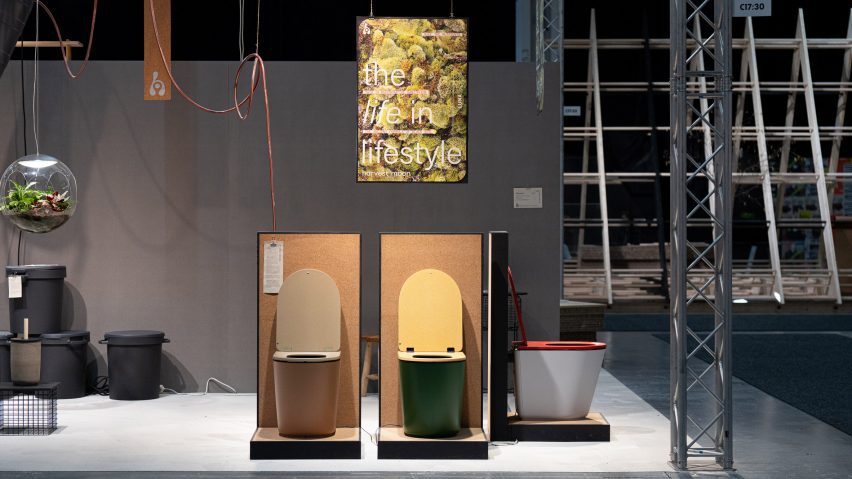
Harvest Moon aims to make compost toilets "a part of everyday life"
Swedish bathroom brand Harvest Moon has launched its first product, a waterless toilet that allows "even the most squeamish" to turn their waste into soil and fertiliser.
Unveiled at Stockholm Furniture Fair, Luna is a composting toilet that promises eco-friendly disposal of human waste without compromising on style, comfort or hygiene.
Harvest Moon spent five years developing the product, with user experience considered just as important as the toilet's eco-friendly credentials.
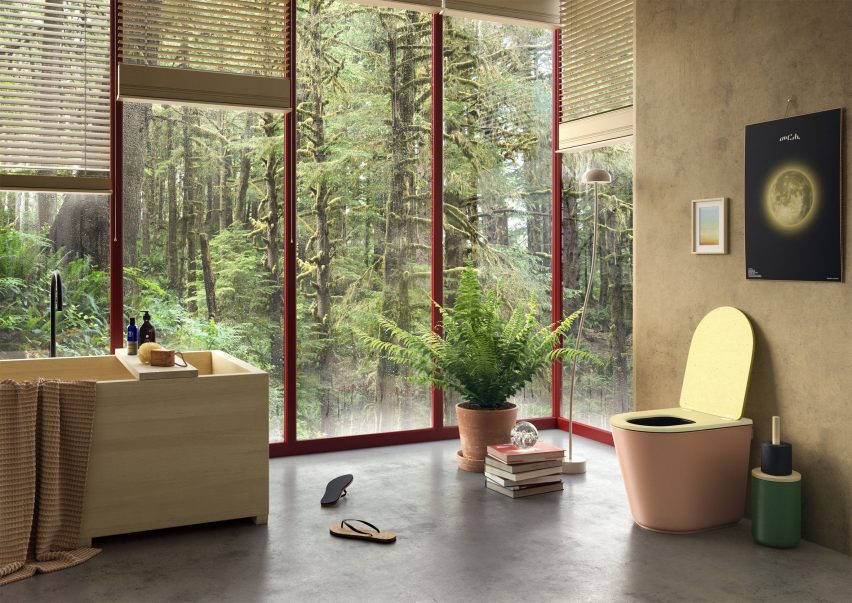
The Stockholm-based brand claims its system is smell-free and allows for disposal of human excrement without you having to come into contact with it.
"We are making water-free toilets a part of everyday life," reads the product brochure.
"Although water-based sanitation in many ways is a solution of the past, it is still seen as the gold standard. Challenging this means creating a water-free toilet that not only looks great and is easy to install but also has a comfort that rivals that of the water-based system."
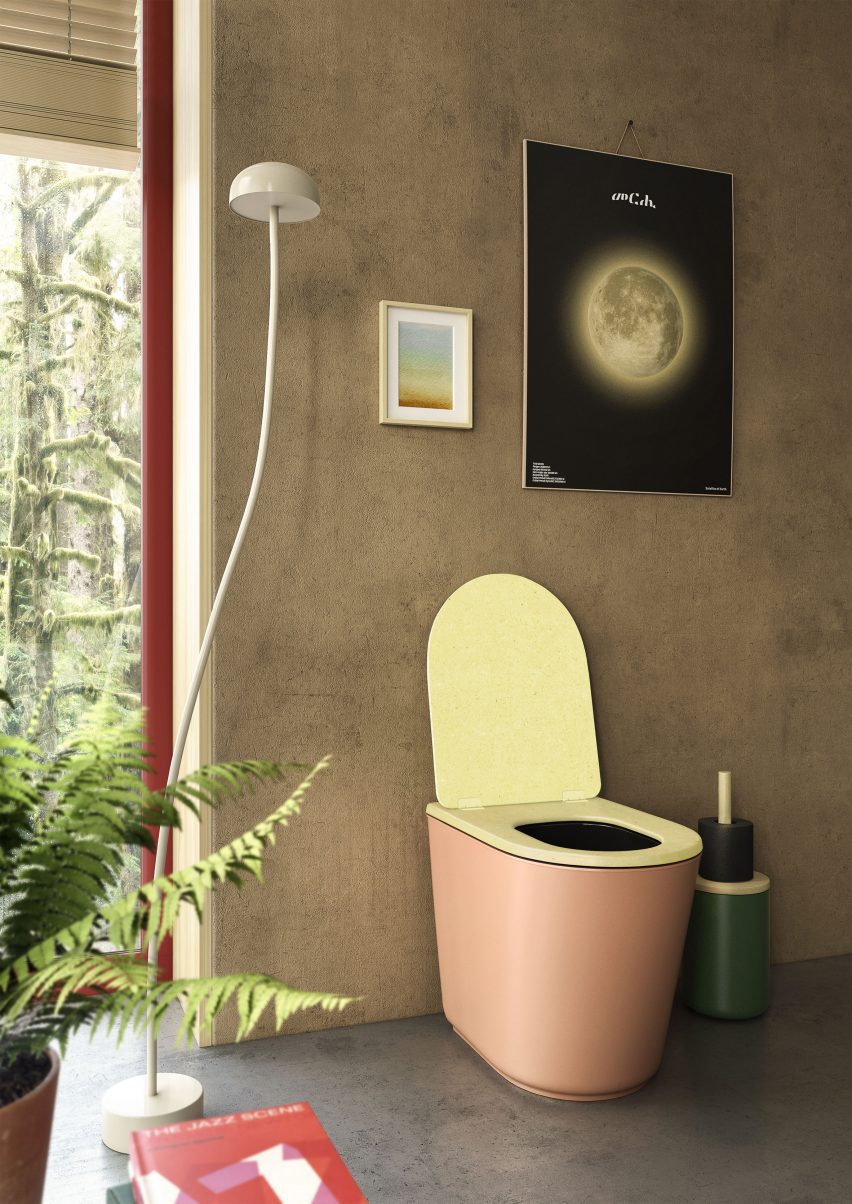
Like other composting toilets, Luna offers significant energy and water savings. Research suggests the toilet accounts for around 27 per cent of a household's water use, which can be as much as 50,000 litres a year.
But Harvest Moon also wants to highlight the other benefits, which include greater flexibility in terms of installation and the recovery of valuable nutrients through composting.
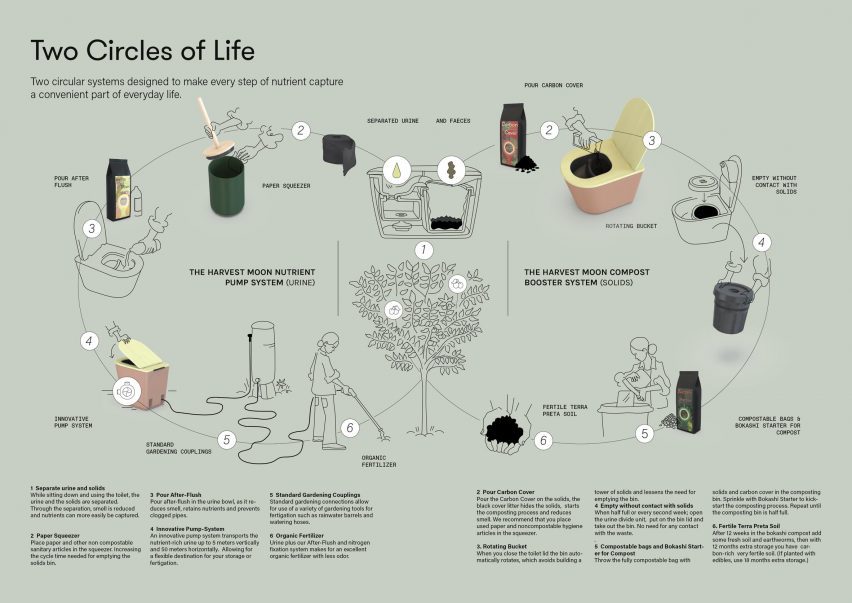
The Luna system works by separating urine and faeces into different disposal compartments.
The feature that sets it apart from its competitors is an integrated pump, so there is no need to manually empty containers of urine or install an underground collection tank.
"When you close the lid, the urine is pumped to a destination that suits your setup," explained Hampus Nordensson, industrial designer at Harvest Moon.
The nutrient-rich urine could be diverted to an outdoor fertiliser storage tank or, if local regulations allow, straight into a ground infiltration system. If neither is possible, it could be pumped straight to the sewer.
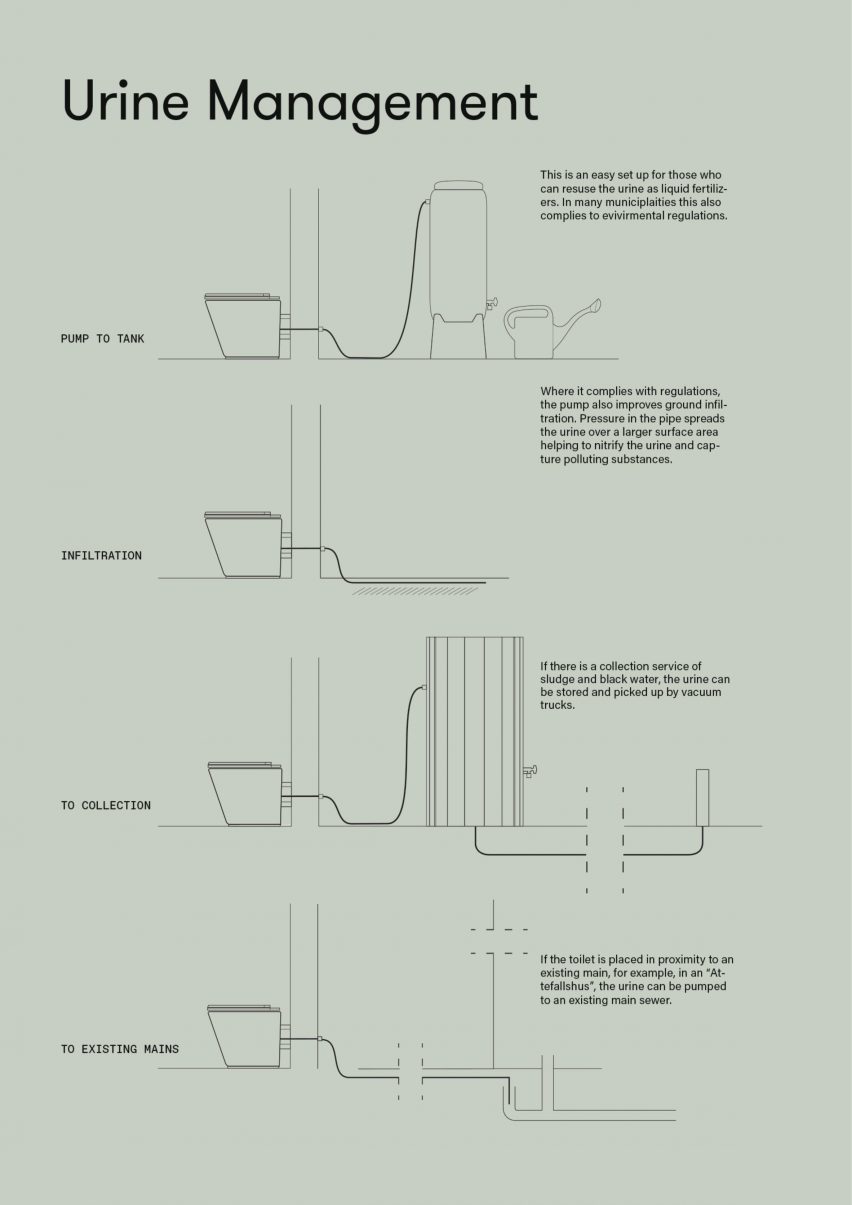
"The pump opens up possibilities," said Nordensson. "It means you can place the toilet wherever you want."
The faeces, meanwhile, are collected in a bin containing a compostable plastic bag, with everything made black to "hide the waste".
The bin's lid is designed to allow an easy, contactless transfer to a latrine compost.
The compost should be left to decompose for a year before being mixed back into soil. Harvest Moon recommends a rotation system, with one compost in storage while a second is being filled.
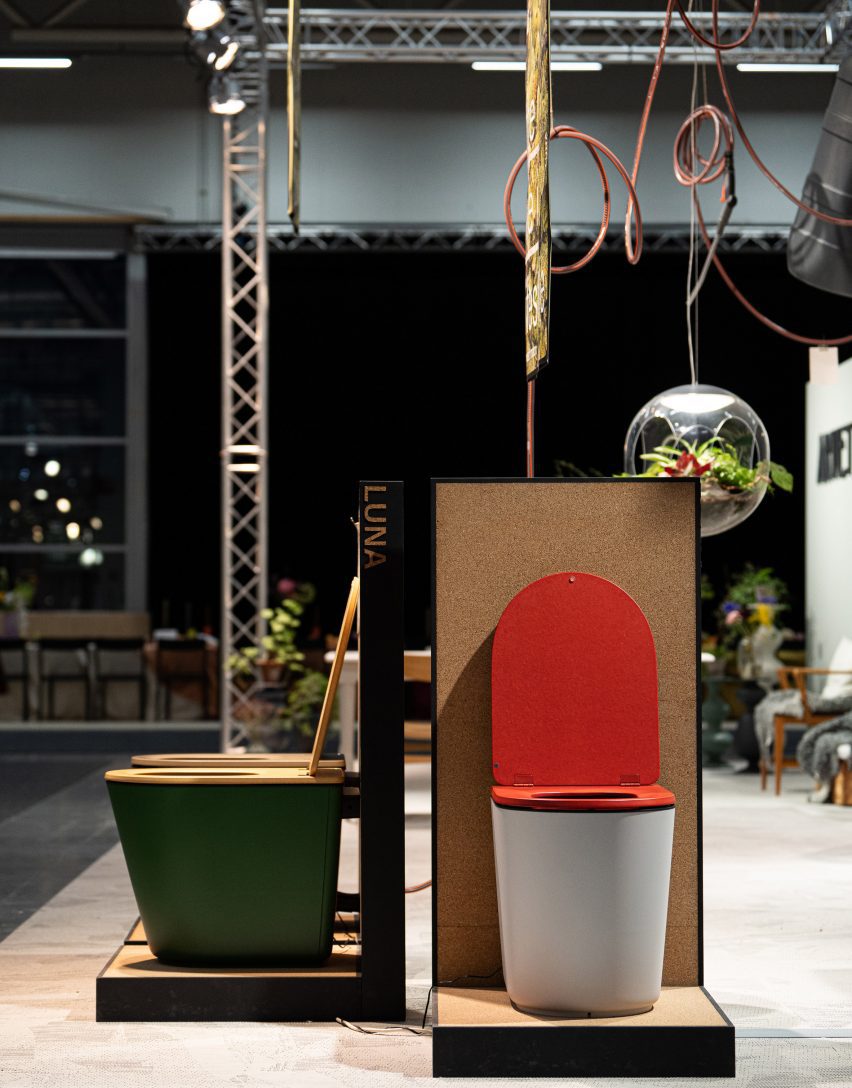
Luna incorporates various electronic functions, including a sliding cover that can be used to keep the faeces covered, a rotating bin that helps the solids decompose and a fan to ensure plenty of air movement.
These can be powered by solar electricity, allowing the toilet to be used off-grid. Harvest Moon also offers a range of accessories to improve the user experience.
These include Carbon Cover, a black biochar compost, and the liquid Urine Mixer, which are both added to the toilet after use to significantly reduce the smell.
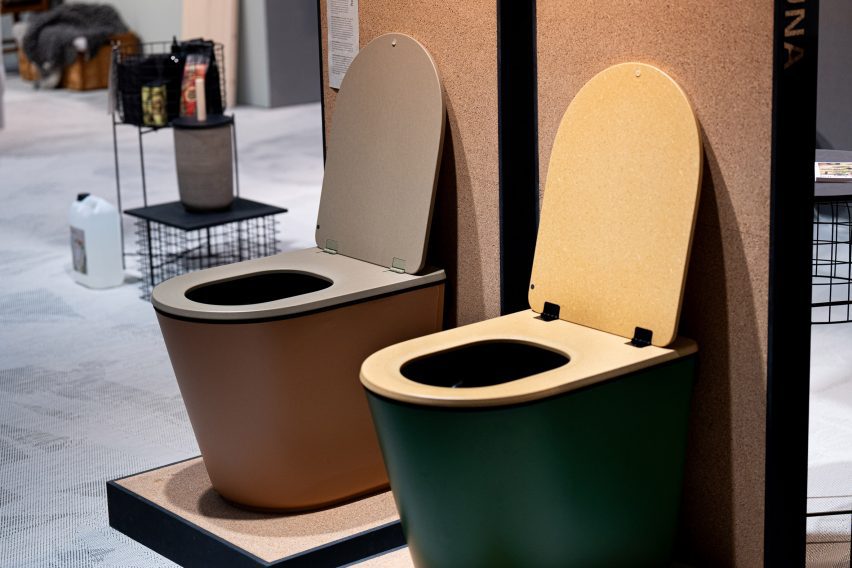
"We want the user experience to be as fresh as possible," added Nordensson.
A paper squeezer allows toilet paper to be efficiently disposed of, while a watering can offers another possible destination for the urine to be pumped into.
The design comes in a range of colours and material finishes, to suit different style palettes.
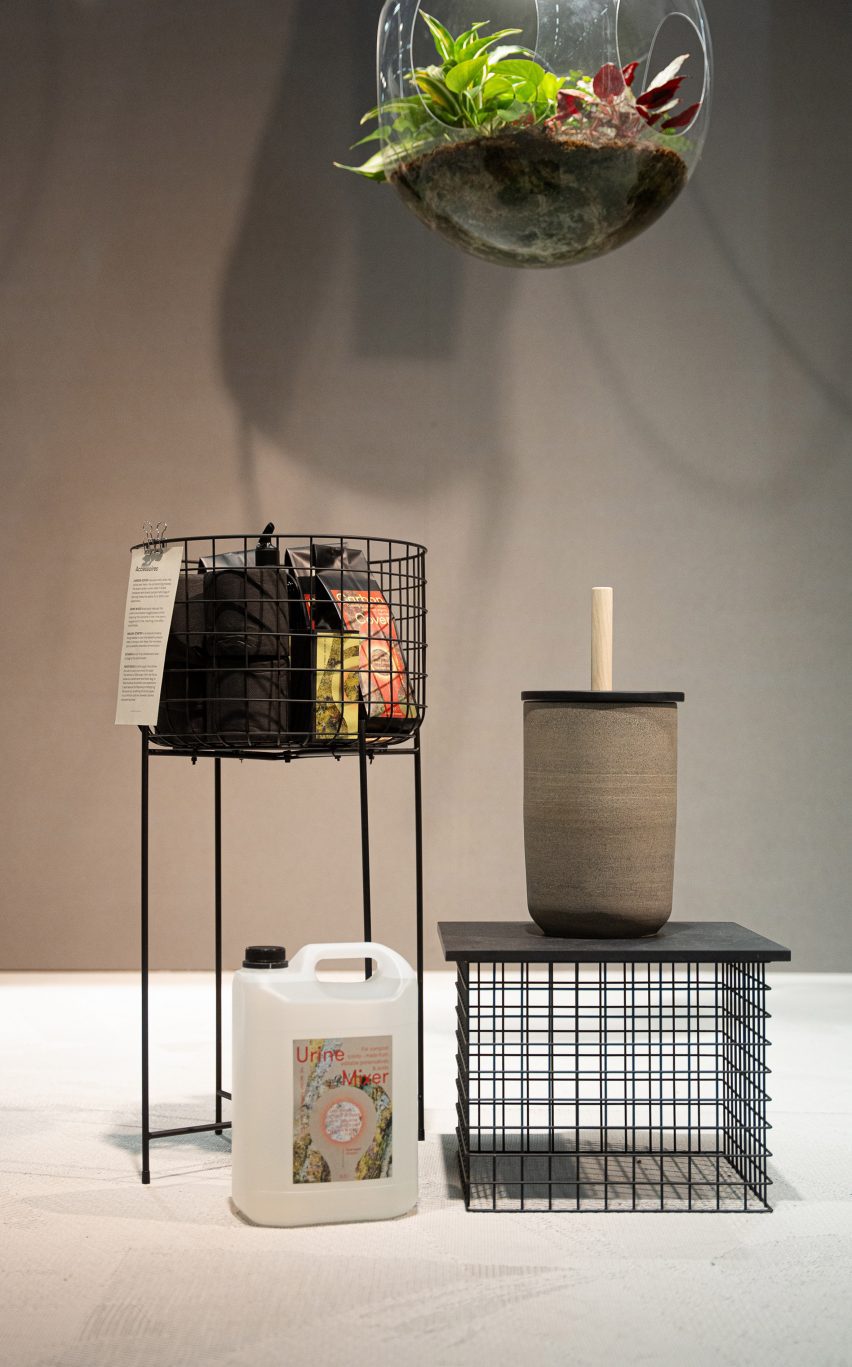
Luna launched as part of New Ventures, a section of Stockholm Furniture Fair dedicated to first-time exhibitors.
The product taps into a growing trend for water-free toilets that is expected to increase as concerns about carbon footprint and energy use continue to impact product design.
The Finnish Pavilion at last year's Venice Architecture Biennale declared "the death of the flushing toilet" with an installation that focused on the future of sanitation.
Harvest Moon was on show at Stockholm Furniture Fair, which was open to the public from 7 to 11 February 2024. See Dezeen Events Guide for more architecture and design events around the world.
The installation photography is by Nathalie Ulinder Cut.